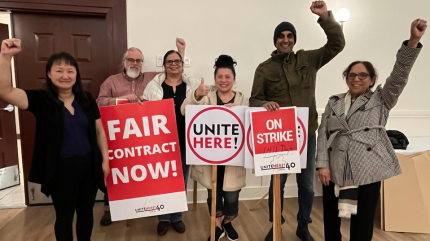
In the annals of Canadian labour history, few events have left as indelible a mark as the long-running hotel strike at the historic Hôtel des Gouverneurs in Trois-Rivières, Quebec.
What began as a dispute over working conditions and wage fairness evolved into a powerful symbol of workers’ resilience, shaping public policy, igniting broader conversations on workers’ rights, and setting a precedent for future labour movements in the hospitality sector.
Spanning nearly four years — from December 2004 until November 2008 — the strike became the longest hotel labour dispute in Canadian history, leaving behind a legacy that continues to resonate.
The roots of discontent
At the heart of the conflict was a deeply entrenched disagreement between the workers, represented by the Confédération des syndicats nationaux (CSN), and the hotel management.
Employees cited stagnant wages, job insecurity, excessive workloads, and management’s refusal to negotiate collective agreements as key issues. For many, the tipping point was the hotel’s insistence on reduced hours and the outsourcing of jobs, which threatened both income stability and job dignity.
The Hôtel des Gouverneurs, operated by the Gouverneur Hotels chain, had long been a cornerstone of Trois-Rivières’ tourism economy.
But behind its polished façade, staff endured conditions that fell short of industry standards. Housekeepers, for example, were expected to clean an unreasonable number of rooms per shift without the requisite increase in pay or breaks.
The union’s demands were not radical — fair wages, better scheduling, and a collective agreement that reflected the actual work being done.
When negotiations broke down in late 2004, workers walked off the job and began what they assumed would be a short-lived strike.
Few could have foreseen that the dispute would drag on for nearly four years, fuelled by management’s intransigence and a legal system ill-equipped to resolve such stalemates promptly.
Community support and media spotlight
What made the Hôtel des Gouverneurs strike unique was not just its duration, but the degree of community involvement and media attention it attracted.
As the strike stretched into its second and third years, support swelled beyond the CSN. Local residents, artists, students, and political figures rallied to the workers’ cause, holding benefit concerts, fundraisers, and awareness campaigns to maintain pressure on the hotel owners and show solidarity with the striking workers.
The strikers, in turn, remained remarkably disciplined and peaceful. The picket line outside the hotel became a site of perseverance — a place where workers gathered not just in protest, but in hope.
Many turned to creative protest strategies, such as theatrical performances and symbolic marches, to keep morale high and the public engaged.
The visibility of the strike drew the attention of national media, shining a spotlight on the challenges faced by hospitality workers across the country.
What started as a local dispute soon became emblematic of the larger fight for labour justice in service industries, many of which rely heavily on women, immigrants, and low-wage workers.
Lasting impact on labour laws and union strategy
In 2008, after years of legal wrangling, dwindling business at the hotel, and growing political pressure, the strike came to an end. Workers returned to their jobs with a newly negotiated contract that included wage increases, better working conditions, and union recognition.
While the immediate concessions were hard-won, the broader consequences of the strike proved even more influential.
The dispute catalysed discussions in Quebec and beyond about the need for stronger labour protections, particularly in sectors where unions are historically underrepresented.
It also exposed gaps in labour law, such as the absence of time limits on strikes and lockouts, which can leave workers in limbo for years. In the aftermath, Quebec’s labour ministry examined legislative reforms to address such issues, and union organisers adopted more aggressive tactics to prevent similarly prolonged disputes in future.
Moreover, the strike became a case study in how solidarity and sustained public engagement can shift the balance of power in labour negotiations.
It served as a reminder that labour movements, when deeply rooted in community and moral clarity, have the potential to outlast corporate resistance.
A legacy still felt today
Two decades on, the impact of the Trois-Rivières strike continues to ripple through Canada’s labour landscape. In recent years, hotel workers in cities like Vancouver and Toronto have cited the CSN-led campaign as an inspiration for their own union drives and protests.
The language and tactics developed during the Hôtel des Gouverneurs strike — public picketing, media engagement, and community coalition-building — have since become common in labour strategy across industries.
More broadly, the strike is now taught in labour studies programmes across the country and commemorated as a moment of working-class courage. It serves not only as a historical footnote, but as a blueprint for resistance against inequality in workplaces where power dynamics are often skewed against the worker.
While many of the original strikers have moved on, retired, or changed professions, their story continues to empower a new generation of workers who refuse to accept precarious employment as the norm.
The Hôtel des Gouverneurs may have been the setting, but the legacy belongs to the countless individuals who stood in the cold, season after season, to demand dignity — and ultimately, helped reshape Canadian labour history.
Their struggle is a potent reminder that no strike, however long, is in vain when it becomes a catalyst for enduring change.



